If you’re looking to explore Singapore’s vibrant neighborhoods, Riviera MRT Station is a great starting point. Located in the heart of Punggol New Town, this elevated Light Rail Transit (LRT) station is part of the Punggol LRT (PGLRT) East Loop. It is situated along Punggol East, between the junctions of Punggol Field and Punggol Central. Riviera Station is a vital transportation hub that connects residents and visitors to other parts of the city-state.
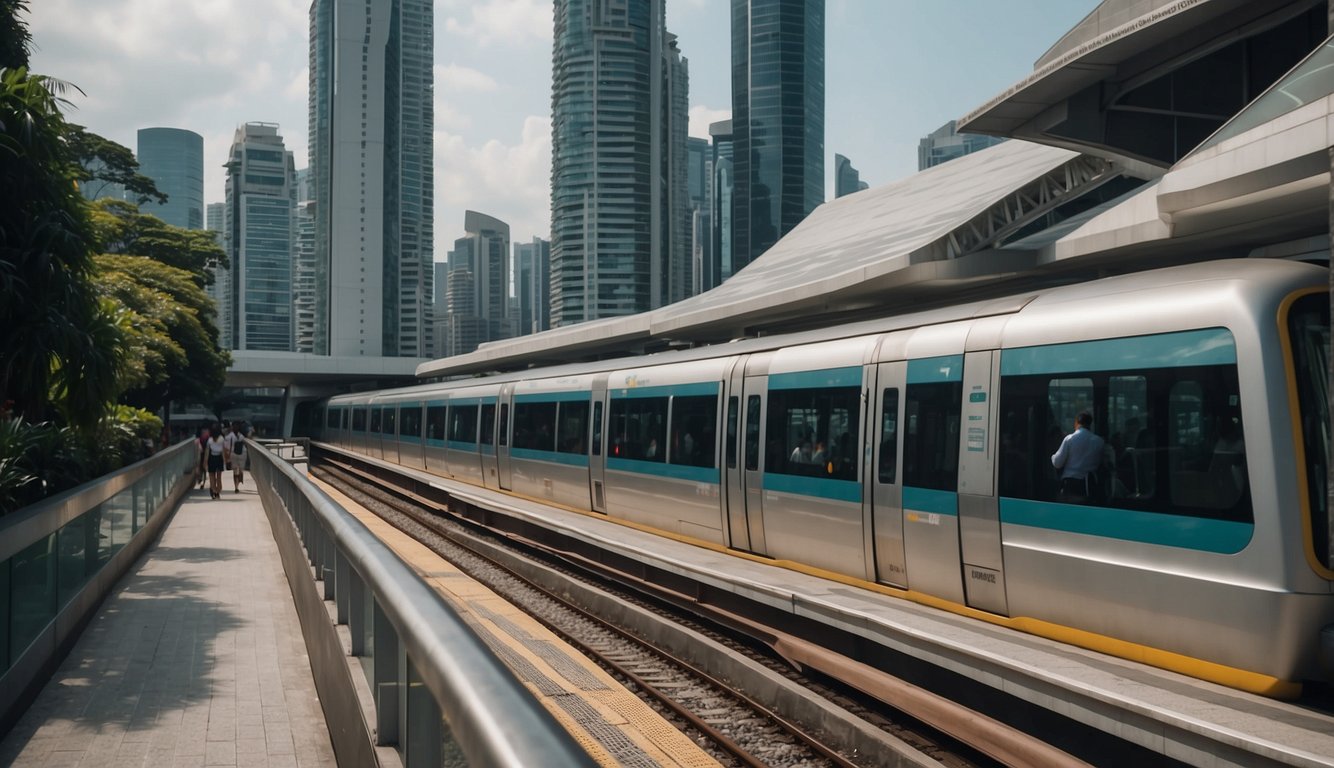
Riviera Station is a modern and well-designed station that blends seamlessly with the surrounding landscape. The station’s name was chosen to match a seaside theme, and it features a unique architectural design that reflects the area’s coastal charm. The station has several features that make it easy for passengers to navigate, including clear signage, well-lit pathways, and spacious platforms.
If you’re planning to explore the area around Riviera Station, you’ll find plenty of things to see and do. The station is located near several landmarks, including Punggol Joint Temple and Punggol Promenade Riverside Park. You can also take a stroll along the scenic Punggol Waterway, which is just a short walk from the station. Whether you’re a resident or a visitor to Singapore, Riviera MRT Station is an excellent starting point for exploring this dynamic city-state.
Key Takeaways
- Riviera MRT Station is a vital transportation hub that connects residents and visitors to other parts of Singapore.
- The station’s unique architectural design reflects the area’s coastal charm, and it features several features that make it easy for passengers to navigate.
- Riviera Station is located near several landmarks and attractions, including Punggol Joint Temple, Punggol Promenade Riverside Park, and the scenic Punggol Waterway.
Overview of Riviera MRT Station
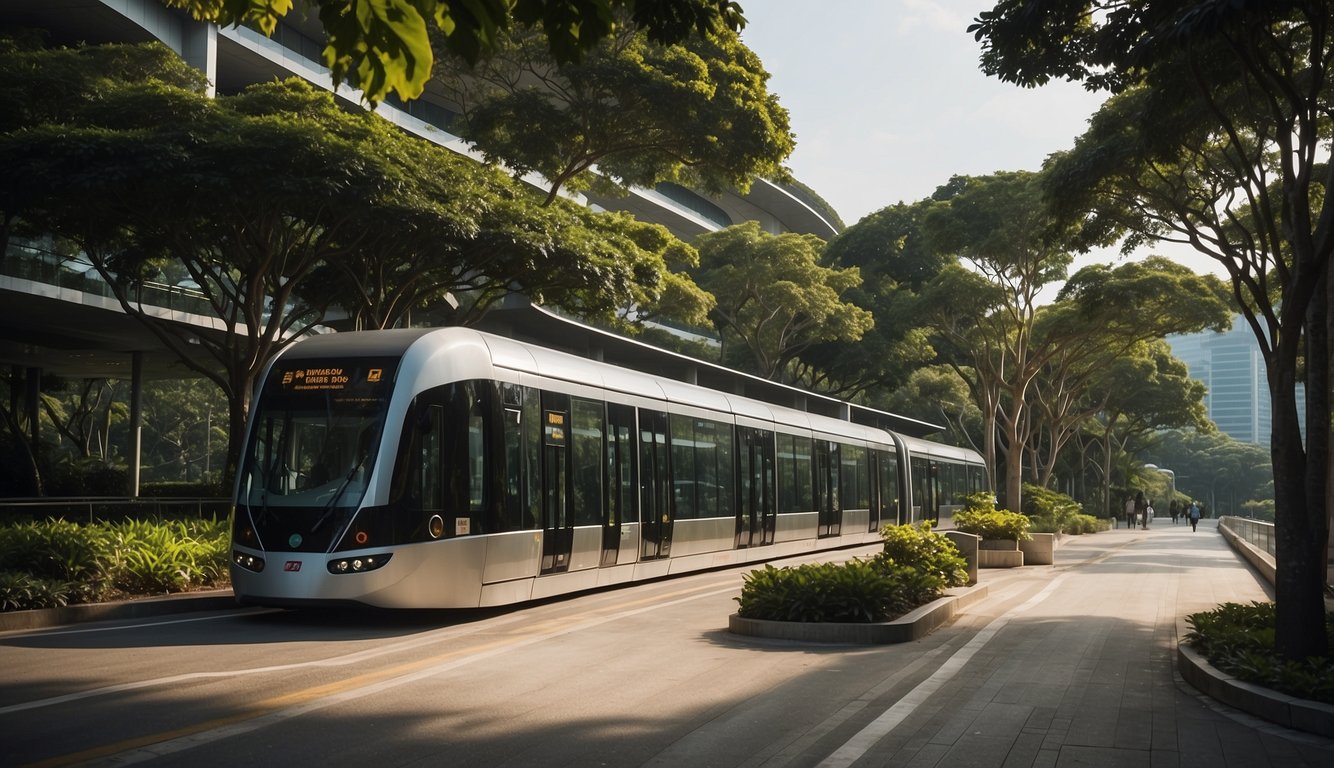
If you’re looking for a convenient way to get around Singapore, then you should definitely check out Riviera MRT Station. This station is located in the Punggol area of Singapore and is part of the Punggol LRT line. It’s an elevated station that’s situated along Punggol East, between the junctions of Punggol Central and Punggol Field.
Riviera MRT Station is a great place to start your journey if you’re looking to explore the Punggol area. From here, you can easily access a number of different attractions and destinations in the area. For example, you can head to the nearby Punggol Promenade Riverside Park, which is a great place to take a stroll and enjoy the beautiful scenery.
The station is easily accessible from various parts of Singapore, making it a convenient option for both locals and tourists. You can use the location map to find your way to the station, which is located at the intersection of Punggol East and Punggol Central.
Inside the station, you’ll find a variety of amenities to make your journey more comfortable. There are ticketing machines where you can purchase your tickets, as well as restrooms and seating areas. The station is also wheelchair accessible, so everyone can easily use it.
Overall, Riviera MRT Station is a great option if you’re looking for a convenient and comfortable way to get around Singapore. Whether you’re a local or a tourist, this station is definitely worth checking out.
Station Design and Features
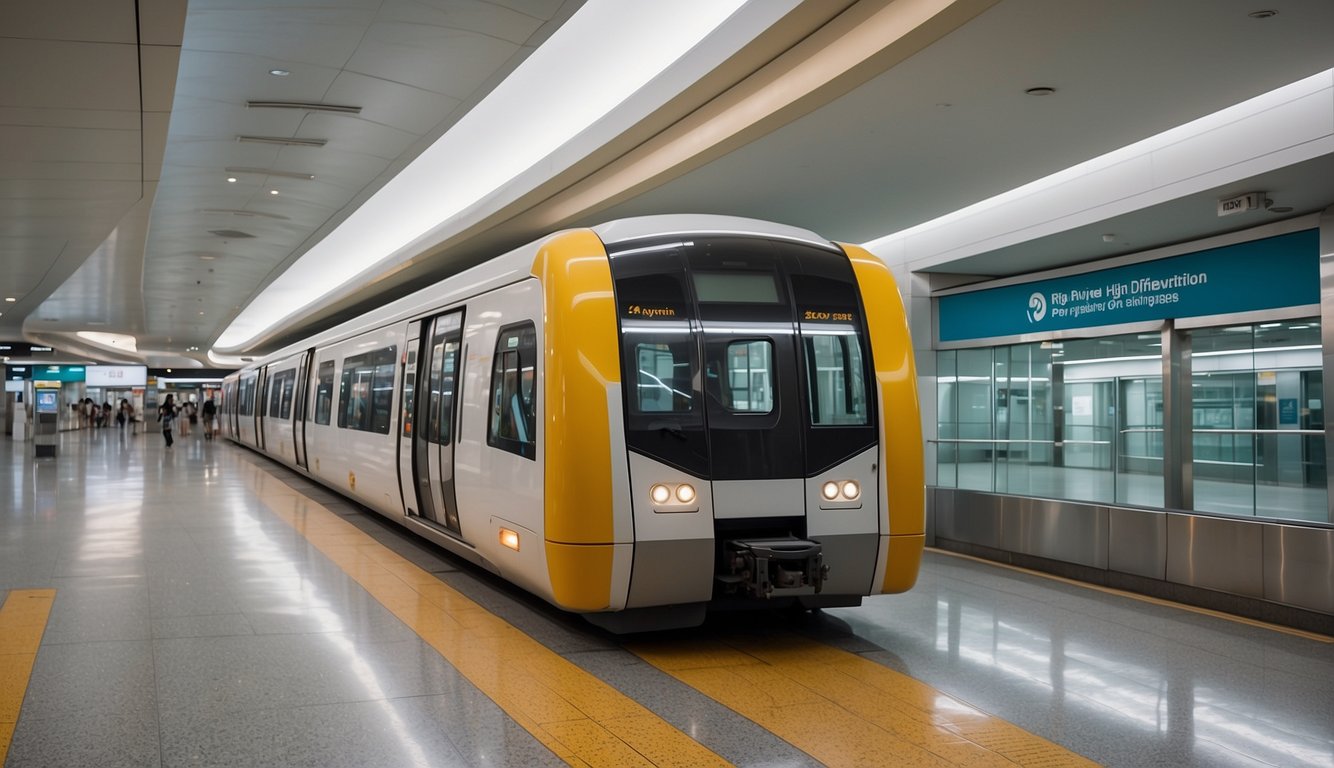
Architecture
As you approach the Riviera MRT Station in Singapore, you will be struck by its unique design. The station’s architecture is a combination of modern and futuristic elements that give it a sleek and sophisticated look. The station’s exterior is made of glass panels that allow natural light to enter and provide a clear view of the surrounding area. The station’s roof is arched and has a unique wave-like pattern that adds to the overall aesthetic appeal.
Once you step inside the station, you will notice the spacious design that allows for easy movement of commuters. The underground station has two levels – the platform level and the concourse level. The platform level is where trains arrive and depart, while the concourse level is where commuters can enter and exit the station. The station’s interior is designed with a minimalist approach, with clean lines and a neutral color scheme that creates a calm and peaceful environment.
Accessibility
The Riviera MRT Station is designed to be accessible to all commuters, regardless of their physical abilities. The station has several features that make it easy for wheelchair users and those with mobility issues to navigate. For example, the station has elevators that connect the platform level to the concourse level, making it easy for commuters to move between the two levels. The station also has tactile flooring that helps visually impaired commuters navigate the station.
In addition, the station has several amenities that make commuting more comfortable for all commuters. The station has air-conditioning to keep commuters cool and comfortable, even on hot and humid days. The station also has restrooms that are clean and well-maintained, ensuring that commuters have access to basic necessities while they are on the go.
Overall, the Riviera MRT Station in Singapore is a testament to modern design and accessibility. Its unique architecture and spacious design make it an exciting place to visit, while its accessibility features make it easy for everyone to use.
Connectivity and Transportation
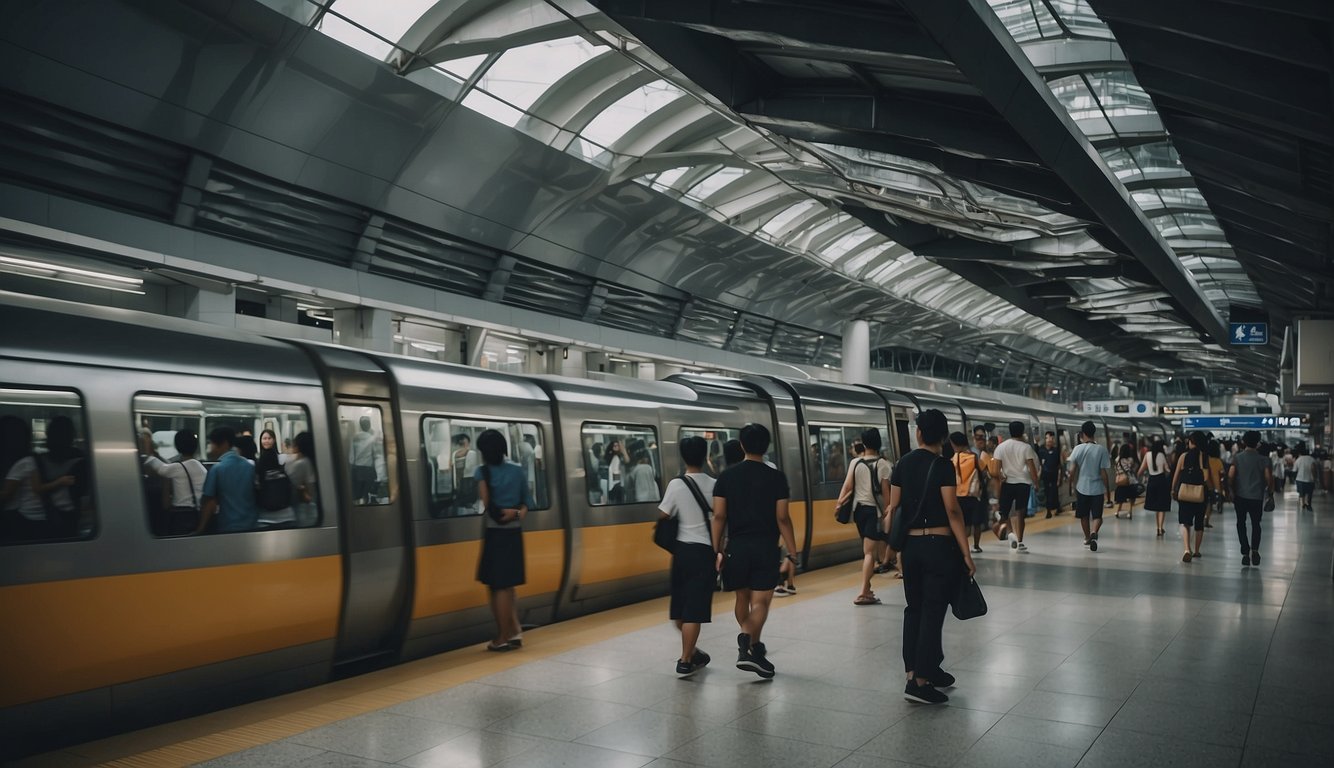
When it comes to connectivity and transportation, Riviera MRT Station is a great option for commuters. Here are some of the ways you can get to and from the station:
Bus Interchanges
If you prefer to take the bus, you’ll be happy to know that there are several bus interchanges located near Riviera MRT Station. The Punggol Bus Interchange is one such option, which is located just a short walk from the station. From here, you can catch a number of different buses that will take you to various locations around Singapore.
Punggol LRT Integration
The Punggol LRT is another great option for getting around the area. Riviera MRT Station is integrated with the Punggol LRT, which means that you can easily transfer between the two modes of transportation. This is especially useful if you need to get to a location that is not directly served by the MRT.
In addition to these options, there are also several other transportation options available in the area. For example, there are several taxi stands located near the station, making it easy to hail a cab when you need one. And if you prefer to walk or bike, there are also several pedestrian and cycling paths located near the station.
Overall, Riviera MRT Station is a great option for commuters who are looking for a convenient and efficient way to get around Singapore. With its integration with the Punggol LRT and its proximity to several bus interchanges, it’s easy to see why so many people are excited about this new addition to the city’s transportation network.
The Cross Island Line Impact
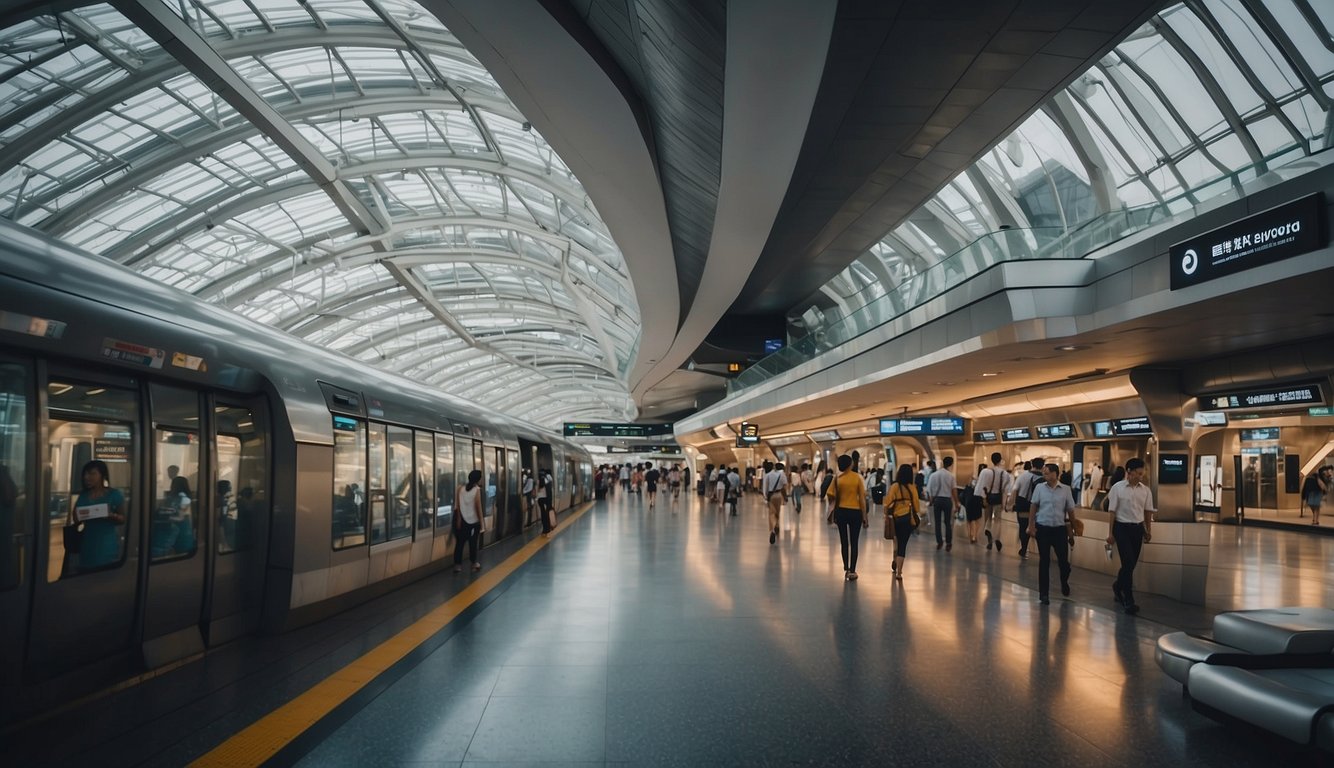
The Cross Island Line (CRL) is set to transform Singapore’s public transportation system. The CRL will be the longest fully underground MRT line in Singapore, spanning over 50 kilometers. The extension to Punggol, which includes the Riviera MRT Station, will provide greater connectivity and accessibility to residents in the northeastern corridor.
Extension to Punggol
The Punggol extension of the CRL will bring greater convenience to residents in the area. With the addition of the Riviera MRT Station, residents in Punggol will have direct access to major hubs such as Jurong Lake District and Changi region. This means shorter travel times and less hassle for commuters.
Interchange Stations
The CRL will also have interchange stations with other MRT lines, making it easier for commuters to transfer between different lines. One such interchange station is the Pasir Ris Interchange Station, which will connect the CRL with the East-West Line. This will provide greater connectivity for residents in the eastern corridor.
Overall, the CRL and its extension to Punggol will have a significant impact on Singapore’s public transportation system. The addition of the Riviera MRT Station and other interchange stations will provide greater accessibility and convenience for commuters. With the CRL set to be completed by 2030, Singaporeans can look forward to a more efficient and convenient public transportation system.
Construction and Development
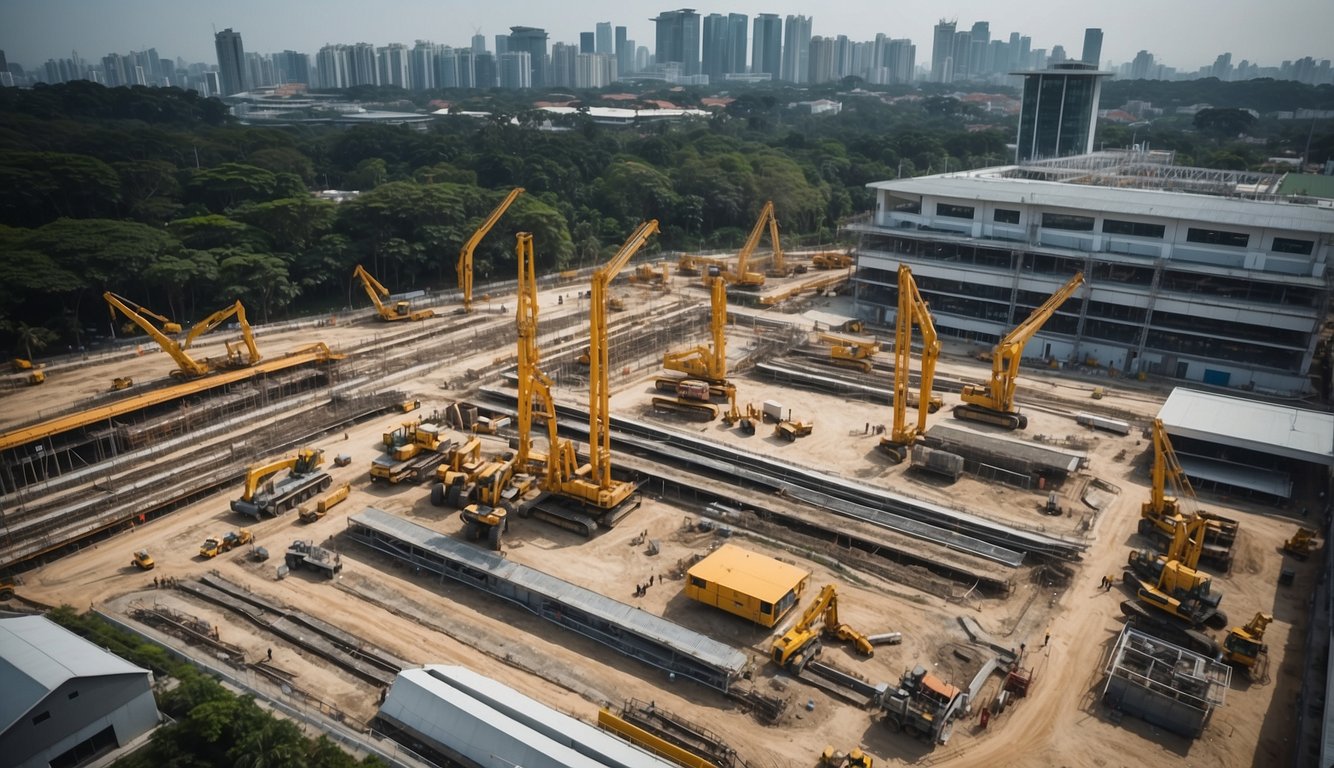
If you’re excited about the upcoming Riviera MRT Station in Singapore, you’ll be interested to know about the construction and development of this impressive new transportation hub. Here’s what you need to know.
Civil Contracts
The construction of Riviera MRT Station is being overseen by the Land Transport Authority (LTA), which has awarded several civil contracts for the project. These contracts include design and construction of the station, as well as construction of related infrastructure such as tunnels and tracks. Notable companies involved in the project include Taisei Corporation and China State Construction Engineering Corporation.
Tunneling and Excavation
To create the tunnels and infrastructure needed for Riviera MRT Station, construction crews are using state-of-the-art tunnel boring machines (TBMs). These machines are capable of excavating large amounts of earth and rock, creating tunnels that are both safe and efficient. Excavation works are ongoing and are expected to continue for several years.
Overall, the construction and development of Riviera MRT Station is an exciting project that will bring improved transportation options to residents of Singapore. Whether you’re a daily commuter or just interested in the latest developments in infrastructure, this project is definitely one to watch.
Neighborhood and Community
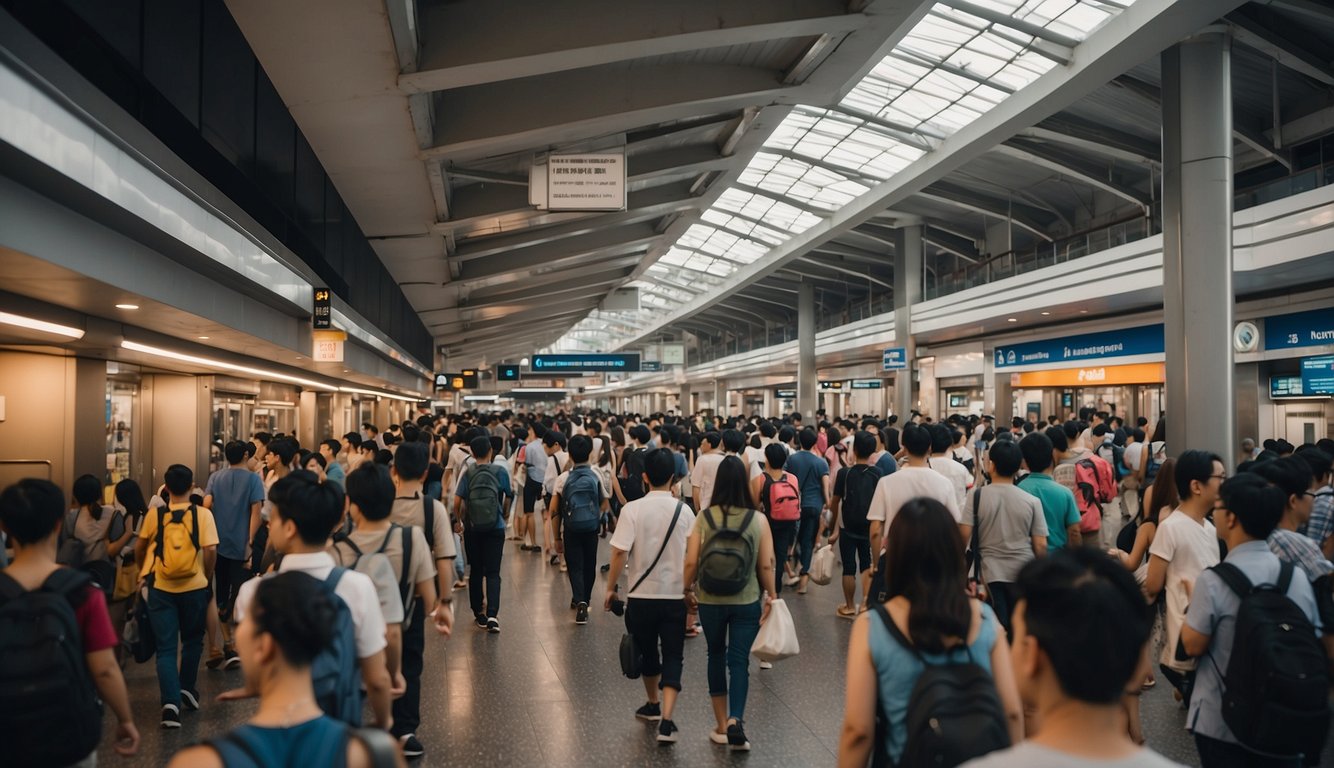
Excited to live near the Riviera MRT Station in Singapore? You’ll be happy to know that the surrounding neighborhood is full of exciting landmarks and attractions. Here are a few to check out:
Punggol Joint Temple
If you’re looking for a place to worship, the Punggol Joint Temple is just a short walk from the Riviera MRT Station. This temple is unique because it serves both Taoist and Buddhist worshippers. You’ll find a variety of religious statues and symbols here, including a large statue of the Goddess of Mercy.
Punggol Promenade Riverside Park
If you’re looking for some outdoor fun, head to the Punggol Promenade Riverside Park. This park is located along the Punggol Waterway and features a variety of walking and cycling paths. You can also rent a kayak or canoe and explore the waterway on your own. The park is also home to a variety of wildlife, including otters, herons, and kingfishers.
Other nearby neighborhoods include Elias, Sengkang, and Punggol Central. Whether you’re in the mood for shopping, dining, or entertainment, you’ll find plenty of options in these areas. So why not take a stroll around the neighborhood and see what you can discover?
Environmental Considerations
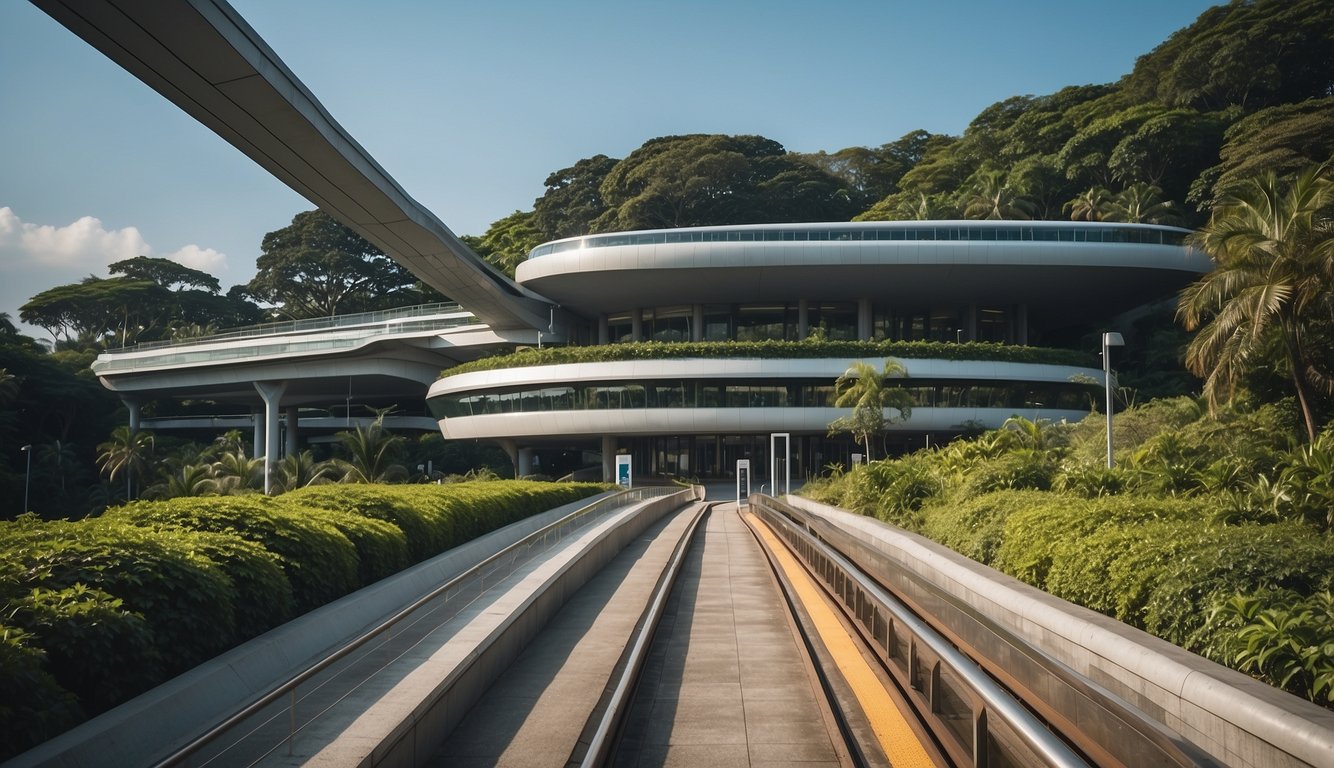
The construction of the Riviera MRT Station in Singapore takes into account various environmental considerations. This is in line with Singapore’s commitment to sustainability and environmental protection. Here are some of the environmental considerations that were taken into account during the construction of the Riviera MRT Station.
Impact Assessments
Before the construction of the Riviera MRT Station, an Environmental Impact Assessment (EIA) was conducted to identify the potential environmental impacts of the construction and operation of the station. The EIA report identified potential impacts on noise, air quality, water quality, and biodiversity. Based on the findings of the EIA, mitigation measures were put in place to minimize the potential environmental impacts of the construction and operation of the station.
Nature Reserve Protection
The Riviera MRT Station is located near the Central Catchment Nature Reserve, which is one of the largest nature reserves in Singapore. To protect the nature reserve, measures were taken to minimize the impact of the construction and operation of the station on the reserve. For example, noise barriers were installed to reduce the impact of noise pollution on the reserve. In addition, the station was designed to blend in with the natural surroundings to minimize the visual impact on the reserve.
Overall, the construction of the Riviera MRT Station in Singapore demonstrates the country’s commitment to sustainability and environmental protection. The EIA and other environmental considerations taken into account during the construction of the station have helped to minimize the potential environmental impacts of the construction and operation of the station.
Passenger Information
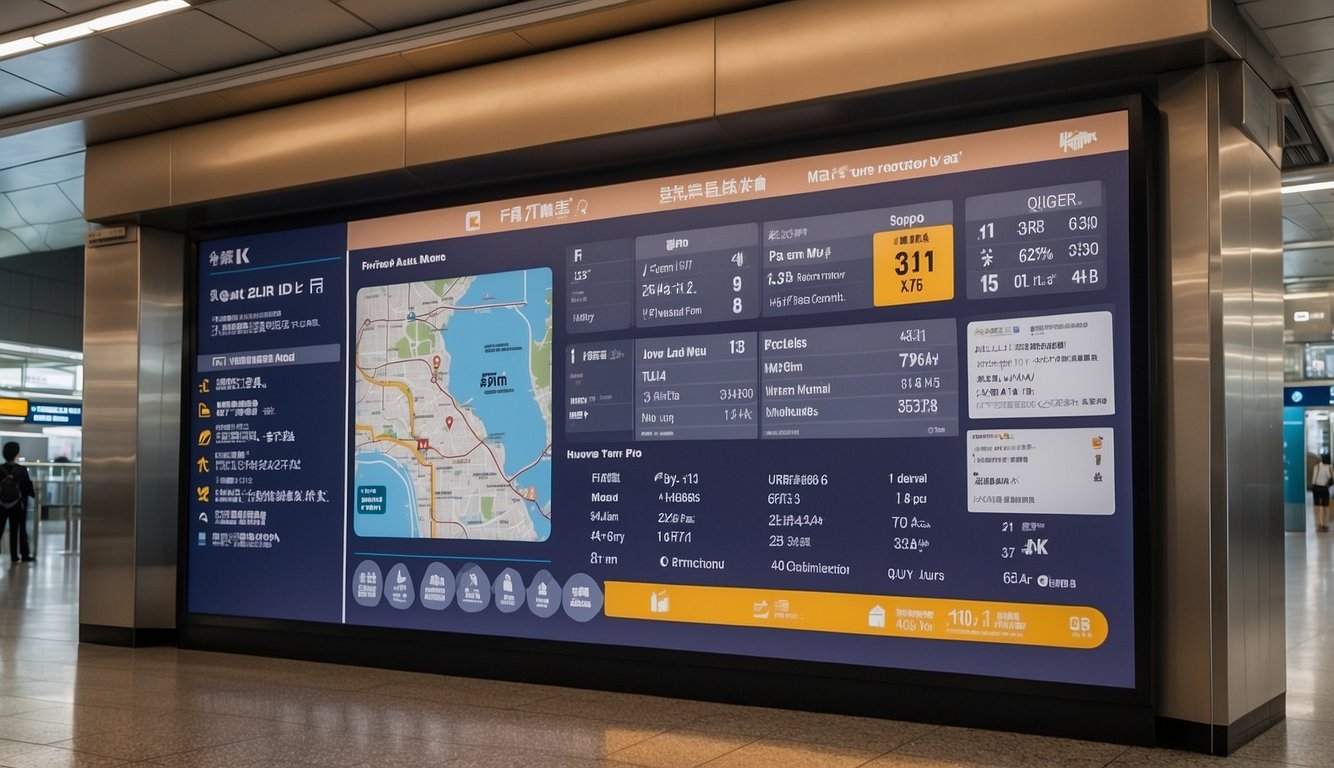
If you’re planning to use the Riviera MRT Station in Singapore, it’s important to know the passenger information to make your journey smooth and comfortable. Here’s what you need to know:
First and Last Train Timings
The first train from Riviera MRT Station starts at around 5:30 am and the last train departs around midnight. However, it’s important to note that these timings are subject to change, so it’s always best to check the official website for the most up-to-date timings.
Safety and Security
To ensure passenger safety, the station has installed several safety measures such as CCTV cameras, emergency intercoms, and fire extinguishers. In addition, there are designated areas for disabled passengers and those with strollers. It’s important to follow the safety guidelines and instructions provided by the station personnel to ensure a safe and secure journey.
Overall, the Riviera MRT Station in Singapore offers a convenient and safe mode of transportation for commuters. Whether you’re a tourist or a local resident, you can enjoy a comfortable and hassle-free journey by following the passenger information provided by the station.
Expansion of the Rail Network
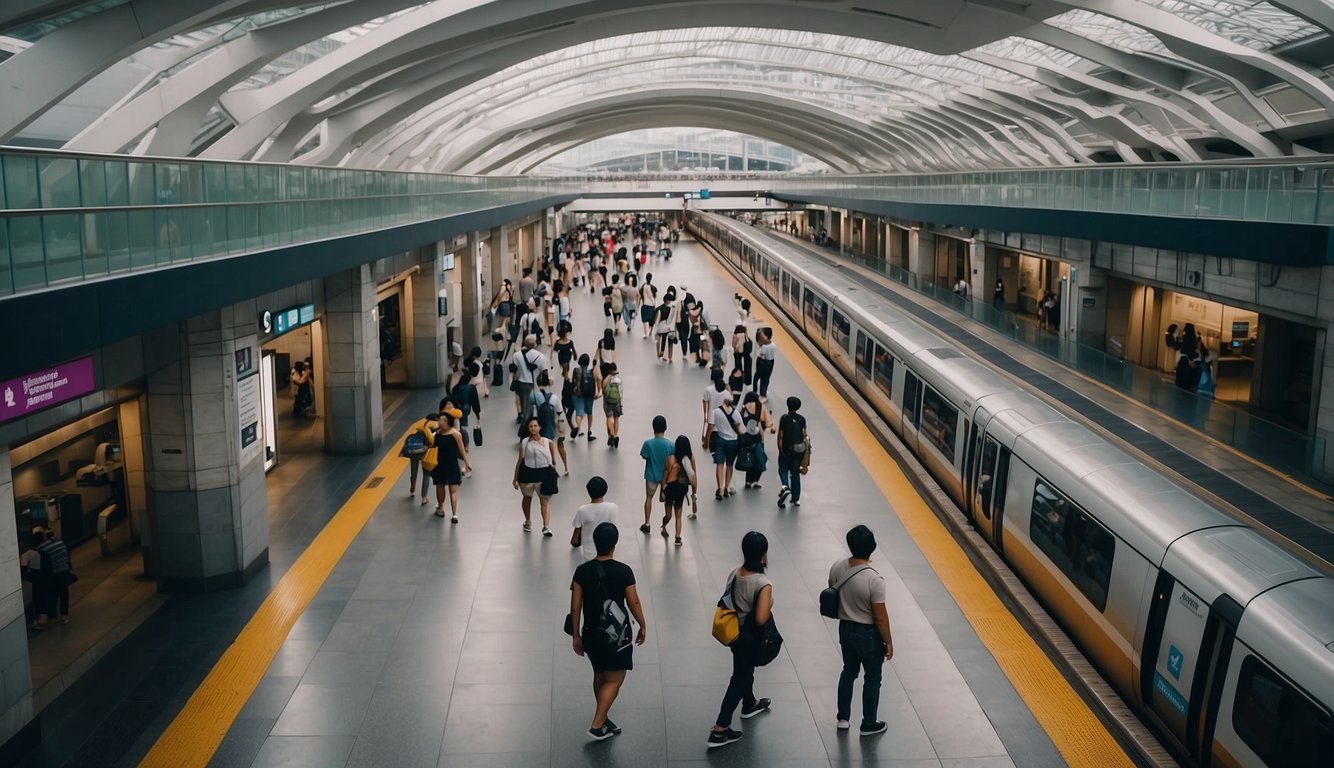
If you’re excited about the new Riviera MRT station in Singapore, you’ll be happy to know that the city-state is continuing to expand its rail network. Here are some of the highlights:
New Stations and Lines
The Cross Island Line (CRL) is one of the most exciting developments in Singapore’s rail network. This new line will connect major residential areas and industrial estates, making it easier for you to get to work or school. The CRL will also offer alternative travel options for commuters and help to redistribute commuter load across Singapore’s entire rail network.
Construction works for CRL2 are expected to commence in 2024, with the stations opening by 2032. Six more stations on the Cross Island Line (CRL) will be built and are slated to open in 2032, according to Transport Minister S Iswaran.
Western Corridor Development
The western corridor of Singapore is also set to benefit from significant rail network expansion. The Jurong Region Line (JRL) will connect the western part of Singapore to the rest of the island, making it easier for you to get around.
The JRL will feature 24 stations and run for 24km, connecting Choa Chu Kang, Boon Lay, Jurong East, Jurong West, and Tawas. The line is expected to open in three phases, with the first phase opening in 2026.
SBS Transit will operate the JRL, which will be the seventh MRT line in Singapore. The company is also operating the Downtown Line (DTL), which opened in 2013, and the Sengkang-Punggol LRT (SPLRT), which opened in 2003.
Overall, the expansion of Singapore’s rail network is an exciting development that will make it easier for you to get around the city-state. With new stations and lines, including the Cross Island Line and the Jurong Region Line, you’ll be able to travel to more places than ever before.
Frequently Asked Questions

When did the Riviera MRT station welcome its first commuters?
Riviera MRT station started serving commuters in 2024. As a part of the Cross Island Line’s Punggol extension, this station is a significant addition to Singapore’s rail network.
What’s the latest scoop on the Cross Island Line’s grand opening?
The Cross Island Line (CRL) is expected to open in phases, starting from 2029. The Punggol extension, which includes Riviera station, is part of the first phase. The CRL will connect various parts of Singapore, including Changi, Jurong, and West Coast.
Can you give me a sneak peek at the Cross Island Line route map?
The CRL will be Singapore’s eighth MRT line, connecting the east and west regions of the island. The route map is not yet finalized, but it is expected to have 29 stations spanning over 50 kilometers. The line will also have interchanges with other MRT lines, making it easier for commuters to travel across the island.
What are the must-visit stops along the Punggol extension?
Apart from Riviera station, the Punggol extension of the CRL will have six more stations. These stations will serve areas such as Punggol Digital District, Pasir Ris, and Loyang. The extension will also have an interchange with the Punggol LRT line, connecting commuters to other parts of Punggol.
Which stations will the Cross Island Line connect for a seamless ride?
The CRL will have interchanges with various MRT lines, including the East-West Line, North-South Line, and Downtown Line. These interchanges will make it easier for commuters to travel across the island. The CRL will also have an interchange with the Thomson-East Coast Line, connecting commuters to the north-east region of Singapore.
What’s the buzz about the completion date for the Cross Island Line Phase 3?
The completion date for the third phase of the CRL has not been announced yet. This phase will connect the western and eastern regions of Singapore, including areas such as Clementi, West Coast, and Pasir Ris. The CRL is expected to be fully operational by 2030, providing commuters with a seamless and efficient mode of transportation.




